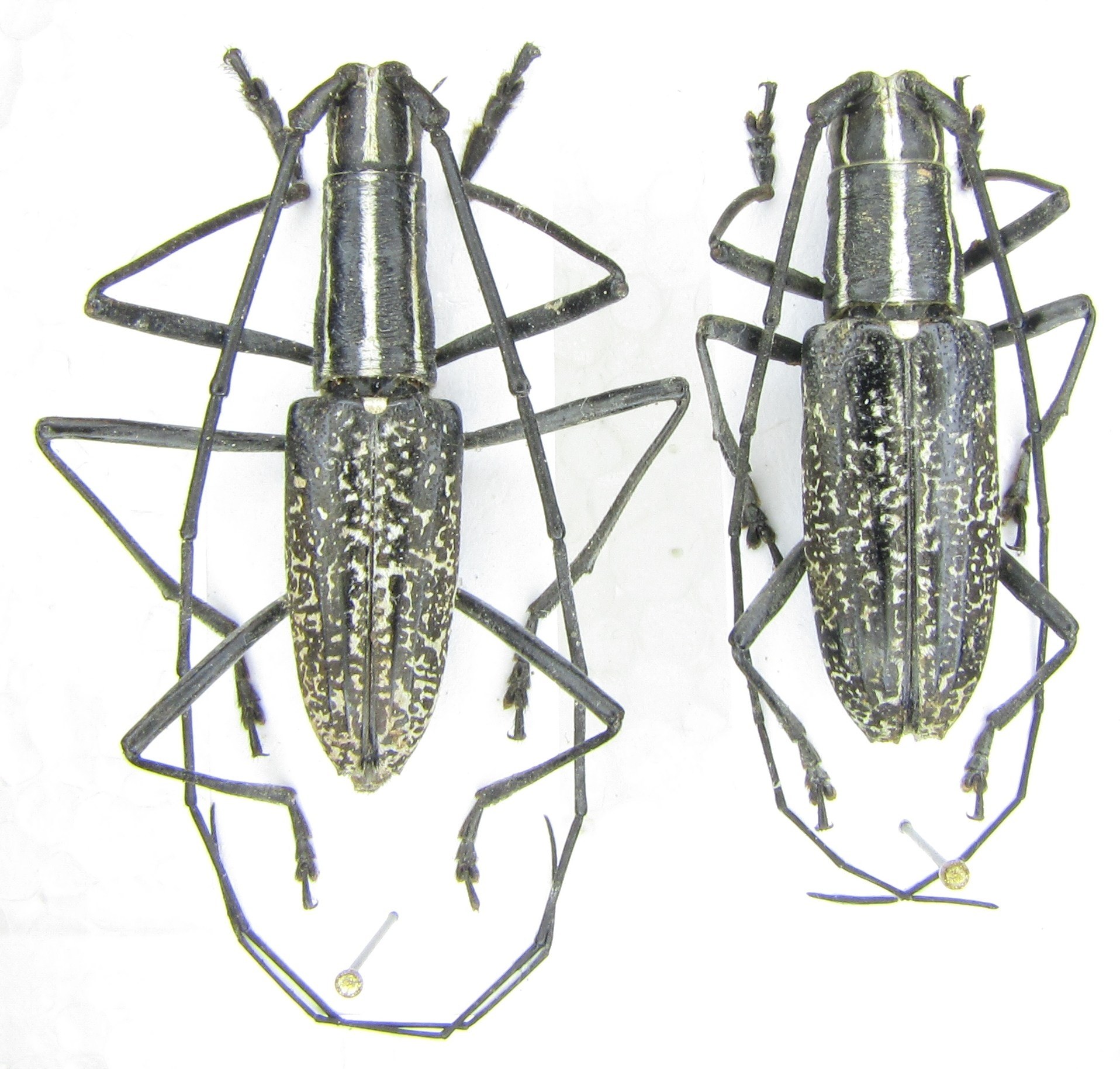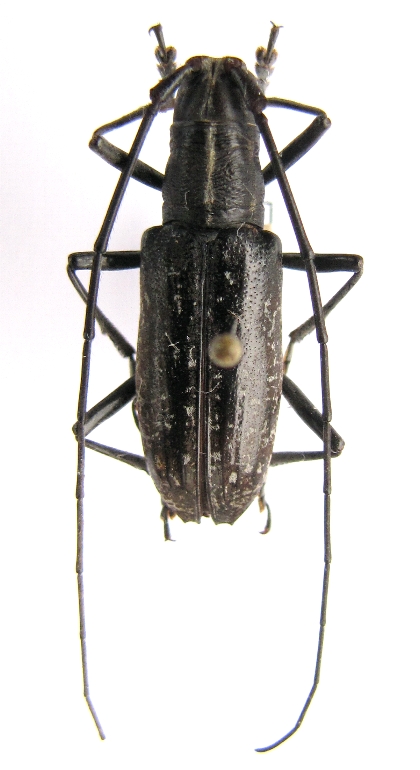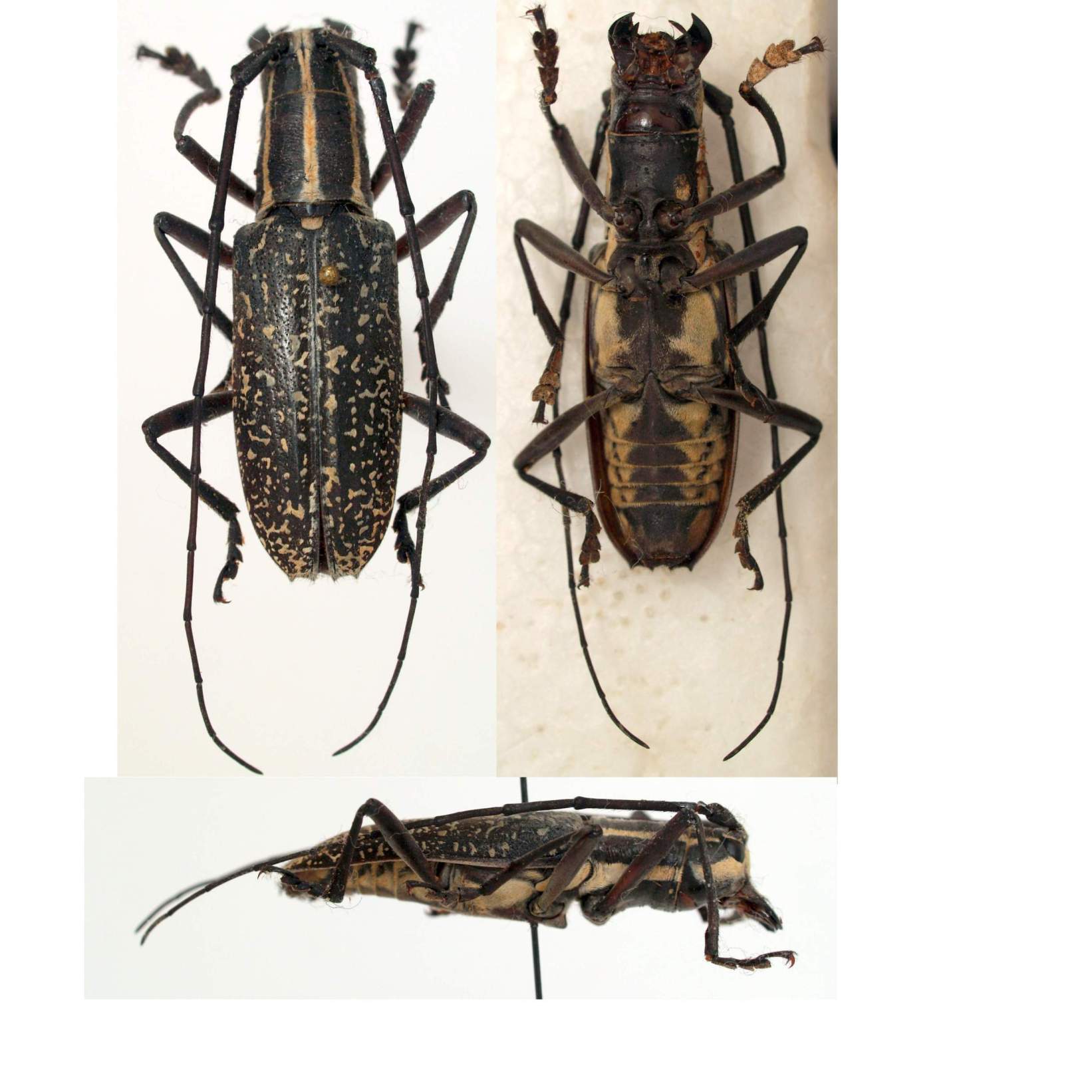| T O P I C R E V I E W |
| Vitali |
Posted - 17/11/2011 : 22:27:07

Very similar to Macrochenus melanospilus, but comes from Flores, so probably is Macrochenus lacordairei Thomson, 1865.
Although M. lacordairei, seems to be indicated only for Java, Flores is just the next island.
The photo in the gallery shows a bit shabby specimen, so it is difficult to compare. |
| 10 L A T E S T R E P L I E S (Newest First) |
| Vitali |
Posted - 22/11/2011 : 08:41:01
Yes, exactly! I was surprised too that lacordairei is shown in Pelargoderus in Lamiaires du Monde (sorry, Gerard, I would save your time if I had written this in past message).
On the other hand, lacordairei is included in Macrochenus in BioLib.
It would become probably clearer if we found the original description of balianus and alorensis.
I also checked the ventral side of my beetles from Flores. It fully corresponds to Gerard's specimen. |
| Francesco |
Posted - 21/11/2011 : 18:29:48

I am not agree: the question is still open.
The subspecies Breuning described were not collected in the islands from where your specimens come.
Even without knowing the descriptions, I am a bit doubtful concerning the value of baliensis (Bali is very close to Java), while the value of aloresis seems to be more realistic. However, the specimens from Lombok and Sumba can logically attributed to none of these subspecies.
Another question is whether these forms have been really described as Pelargoderus, since I wonder that Breuning transferred Macrochenus lacordairei to such genus! |
| Gerard |
Posted - 21/11/2011 : 17:02:23
Hello, according to the research on Lamiaires of the world, the subspecies that is the closest is Pelargoderus lacordairei alorensis Breuning, 1956. Who is giving islands of the probe, the site of the genus was not changed, this beast is always linked to the Pelargoderus. This has given me the difficulties for the found.
You have therefore suggested that these animals are Macrochenus lacordairei alorensis Breuning, 1956, now the question is whether it is a subspecies or a variety. |
| Vitali |
Posted - 21/11/2011 : 12:57:48
Dear Francesco and Gerard. Thank for your contributions. I am afraid we are late.
Breuning has already described two subspecies of M. lacordairei - alorensis and balianus, both in 1956.  I have no these descriptions. I have no these descriptions.
The species is probably variable. I can see the difference in the pubescence of ventral side even in Gerard's two beetles, though they come from the neighbouring islands. |
| Francesco |
Posted - 19/11/2011 : 08:54:13

And this is my specimen (a female) coming from Java (no further data).
The ventral side is nearly entirely black.
Body length 25 mm. |
| Gerard |
Posted - 18/11/2011 : 22:28:12

INDONESIE, Ile de Sumba, Saikabubak, XII.1998,
Taille 34 mm |
| Gerard |
Posted - 18/11/2011 : 22:23:25

INDONESIE, Ile de Flores, I.2007,
Taille 28 mm |
| Francesco |
Posted - 18/11/2011 : 21:42:25
Can you insert the pictures? |
| Gerard |
Posted - 18/11/2011 : 19:43:42
Hello have you
I have in collection three Macrochenus identical to these beasts from two sources much more to the South (Flores, Sumba).
Is it possible the same species or is it another species? |
| Francesco |
Posted - 18/11/2011 : 18:55:30
The doubt is legitimate.M. melanospilus (lighter) was described from Borneo and M. lacordairei (darker) from Java.
According to Breuning (1943) they might be forms of only one species; nonetheless, I have got a female from Java (tomorrow I will add the picture) nearly black, as the male in the gallery. Thus, it seems that different forms inhabit different places.
Your specimens seem to belong to an intermediate form, lighter of that coming from Java; hence, an eastward climax to darker forms does not seem confirmed.
I think that Breuning would not have hesitated to describe another species...  more seriously, I do not exclude that your beetles might belong to a new subspecies. But we need to compare more specimens and investigate more characters (not only the pattern) in order to decide on the status of these forms. more seriously, I do not exclude that your beetles might belong to a new subspecies. But we need to compare more specimens and investigate more characters (not only the pattern) in order to decide on the status of these forms. |


